Automated Preimeter Medmont M-700, NEW!
Description
Automated Preimeter Medmont M-700, NEW!
igh Precision
The concentric test point density, which increases towards the fovea, facilitates accurate determination of field loss, particularly for arcuate and small macula defects. In the standard Central 30° field, 100 test points are used with a macula region point density of typically 3°.
Fast
A new, fast threshold test strategy is now available. With the use of advanced predictive logic algorithms, a 30° field can be completed in as little as 3 minutes per eye. Screening examinations require only 1.5 minutes per eye. Defects are automatically confirmed and qualified.
Full Field Capability
With a test capability extending to 80°, the M700 provides a complete diagnosis of a patient's visual field, allowing peripheral defects that are not associated with the central field to be explored.
Practice Integration
Practice Management Integration provides the logical way to streamline your practice. With the Medmont Studio package the practitioner is now able to store perimetry, topography and digital imaging results in a format that is more easily accessible. This negates the need for multiple patient entry and improves markedly the efficiency of the practice.
Full integration with the major practice management databases is available, and the access of data over a network means that you are not confined to viewing information from the PC that is running the equipment.
Familiar User Interface
The explorer style interface allows easy navigation and review of patient results and direct access to all functionality at all times. Swap from reviewing test results or editing patient details with a single mouse click. Multiple image maps can be displayed with a wide variety of options and map types. The profile display provides an interactive view of the image data at any cross-section.
The multimedia capabilities (sound card required) of the M700 provide a wide range of audible warning tones for specific events (eg fixation loss, end of test) that may occur during an examination. Several M700 units can operate on a network sharing a single database.
Unique Test Facilities
Binocular Driving Test: Meeting worldwide standards to check a drivers visual field, this new test covers 160° of a patient's binocular field.
Flicker Test: Tests with a flickering stimulus provide improved sensitivity and earlier detection of field loss over normal static tests. The M700 offers this facility with a special test strategy which requires the patient to respond to the presence of flicker in the stimulus.
Diplopia Test: The M700 provides a unique diplopia test where targets are presented in a sequence requiring a progressive change in the direction of gaze by the patient. Indication of a double image results in automatic detailed examination of that area of gaze.
Custom Fields Create a new test region quickly and easily. Use the mouse to select a region and you are ready to commence testing
Defect Verification Using the mouse you can retest completed points or add new test locations at the periphery of a field while the test is still running, enabling any suspect field defects to be verified and fully explored without undertaking a new test.
Sophisticated Testing
The new spatially adaptive test initially utilises a sparse field. If the software finds an area of concern additional points will be tested, this offers a new, faster method of defining a large defect. For all tests, patient reaction time is continuously monitored and the speed of the stimulus presentation is adjusted accordingly.
Operational Simplicity
With an easy-to-use but comprehensive menu operating under Microsoft Windows no previous computer experience or detailed perimetry knowledge is required to operate the M700.
Advanced System Analysis
New 3D HoV display
Global statistics
Regression and histogram analysis
HoV profile analysis
Full patient history via thumbnails
System Maintenance
The fully electronic stimulator unit, with no moving parts, together with standard computer hardware, results in low maintenance requirements for the M700. There are no routine service requirements for the M700.
Patient Comfort
The open, modern, ergonomic design of the M700 overcomes the claustrophobic problem and lack of ventilation often experienced in full bowl perimeters. Improved patient comfort will result in more reliable field tests.
M700 Specifications
Stimulator Screen
Part hemispherical bowl, radius 30cm integrated diffusing surface.
Test Fields
Central 30º : 100 points
Full 50° : 164 points
Peripheral 30°-50° : 73 points
Macula 10° : 49 points
Glaucoma 22°/50° : 104 points
Neurological 50° : 164 points
Quickscan 22°/30° : 40 points
Driving 50°/80° : 106 points
Binocular 30°/40° : 21 to 128 points
Binocular Driving Test 160° : 124 points
Spatially Adaptive Test 50° : 40 points
Stimulus Source
Rear projection light emitting diode
Stimulus Colour
Pale Green - wavelength 565nm
half bandwidth 28n
Stimulus Size
Goldmann Size 111 (0.43°)
Stimulus Intensity
0.03 asb to 1000 asb
in 15 x 3dB steps / 45 x 1dB steps
Stimulus Duration
Adjustable 0.1 to 9.9 sec (nom. 0.2 sec)
Patient Response Time
(a) Adaptive to patient
(b) Operator selection of normal or slow ranges
(c) Adjustable 0.1 to 9.9 sec (nom. 1.1 sec)
Minimum Inter-stimulus Delay
Adjustable 0.1 to 9.9 sec (nom. 0.4 sec)
Background Illumination
10 asb (3.2cd/m²), automatic level control
Test Lens Diameter
38mm
Fixation Method
"Heijl-Krakau" blind-spot method, automatic tracking during test with visual and audible warning of fixation errors. Fixation camera included for clinician reference.
Optional video fixation tracking (fixation camera and feature pack license required). Uses iris detection to track eye movement in the video feed and automatically prompt clinician when fixation is lost.
Stimulator Unit Dimensions
626mm wide x 438mm deep x 713mm high
Stimulator Unit Weight
16kg approx
Stimulator Unit Power
110/220/240 VAC
50/60Hz 30W
igh Precision
The concentric test point density, which increases towards the fovea, facilitates accurate determination of field loss, particularly for arcuate and small macula defects. In the standard Central 30° field, 100 test points are used with a macula region point density of typically 3°.
Fast
A new, fast threshold test strategy is now available. With the use of advanced predictive logic algorithms, a 30° field can be completed in as little as 3 minutes per eye. Screening examinations require only 1.5 minutes per eye. Defects are automatically confirmed and qualified.
Full Field Capability
With a test capability extending to 80°, the M700 provides a complete diagnosis of a patient's visual field, allowing peripheral defects that are not associated with the central field to be explored.
Practice Integration
Practice Management Integration provides the logical way to streamline your practice. With the Medmont Studio package the practitioner is now able to store perimetry, topography and digital imaging results in a format that is more easily accessible. This negates the need for multiple patient entry and improves markedly the efficiency of the practice.
Full integration with the major practice management databases is available, and the access of data over a network means that you are not confined to viewing information from the PC that is running the equipment.
Familiar User Interface
The explorer style interface allows easy navigation and review of patient results and direct access to all functionality at all times. Swap from reviewing test results or editing patient details with a single mouse click. Multiple image maps can be displayed with a wide variety of options and map types. The profile display provides an interactive view of the image data at any cross-section.
The multimedia capabilities (sound card required) of the M700 provide a wide range of audible warning tones for specific events (eg fixation loss, end of test) that may occur during an examination. Several M700 units can operate on a network sharing a single database.
Unique Test Facilities
Binocular Driving Test: Meeting worldwide standards to check a drivers visual field, this new test covers 160° of a patient's binocular field.
Flicker Test: Tests with a flickering stimulus provide improved sensitivity and earlier detection of field loss over normal static tests. The M700 offers this facility with a special test strategy which requires the patient to respond to the presence of flicker in the stimulus.
Diplopia Test: The M700 provides a unique diplopia test where targets are presented in a sequence requiring a progressive change in the direction of gaze by the patient. Indication of a double image results in automatic detailed examination of that area of gaze.
Custom Fields Create a new test region quickly and easily. Use the mouse to select a region and you are ready to commence testing
Defect Verification Using the mouse you can retest completed points or add new test locations at the periphery of a field while the test is still running, enabling any suspect field defects to be verified and fully explored without undertaking a new test.
Sophisticated Testing
The new spatially adaptive test initially utilises a sparse field. If the software finds an area of concern additional points will be tested, this offers a new, faster method of defining a large defect. For all tests, patient reaction time is continuously monitored and the speed of the stimulus presentation is adjusted accordingly.
Operational Simplicity
With an easy-to-use but comprehensive menu operating under Microsoft Windows no previous computer experience or detailed perimetry knowledge is required to operate the M700.
Advanced System Analysis
New 3D HoV display
Global statistics
Regression and histogram analysis
HoV profile analysis
Full patient history via thumbnails
System Maintenance
The fully electronic stimulator unit, with no moving parts, together with standard computer hardware, results in low maintenance requirements for the M700. There are no routine service requirements for the M700.
Patient Comfort
The open, modern, ergonomic design of the M700 overcomes the claustrophobic problem and lack of ventilation often experienced in full bowl perimeters. Improved patient comfort will result in more reliable field tests.
M700 Specifications
Stimulator Screen
Part hemispherical bowl, radius 30cm integrated diffusing surface.
Test Fields
Central 30º : 100 points
Full 50° : 164 points
Peripheral 30°-50° : 73 points
Macula 10° : 49 points
Glaucoma 22°/50° : 104 points
Neurological 50° : 164 points
Quickscan 22°/30° : 40 points
Driving 50°/80° : 106 points
Binocular 30°/40° : 21 to 128 points
Binocular Driving Test 160° : 124 points
Spatially Adaptive Test 50° : 40 points
Stimulus Source
Rear projection light emitting diode
Stimulus Colour
Pale Green - wavelength 565nm
half bandwidth 28n
Stimulus Size
Goldmann Size 111 (0.43°)
Stimulus Intensity
0.03 asb to 1000 asb
in 15 x 3dB steps / 45 x 1dB steps
Stimulus Duration
Adjustable 0.1 to 9.9 sec (nom. 0.2 sec)
Patient Response Time
(a) Adaptive to patient
(b) Operator selection of normal or slow ranges
(c) Adjustable 0.1 to 9.9 sec (nom. 1.1 sec)
Minimum Inter-stimulus Delay
Adjustable 0.1 to 9.9 sec (nom. 0.4 sec)
Background Illumination
10 asb (3.2cd/m²), automatic level control
Test Lens Diameter
38mm
Fixation Method
"Heijl-Krakau" blind-spot method, automatic tracking during test with visual and audible warning of fixation errors. Fixation camera included for clinician reference.
Optional video fixation tracking (fixation camera and feature pack license required). Uses iris detection to track eye movement in the video feed and automatically prompt clinician when fixation is lost.
Stimulator Unit Dimensions
626mm wide x 438mm deep x 713mm high
Stimulator Unit Weight
16kg approx
Stimulator Unit Power
110/220/240 VAC
50/60Hz 30W
Additional Informations
Query on the Item?
Do you have any questions on this item?
 Deutsch
Deutsch italiano
italiano


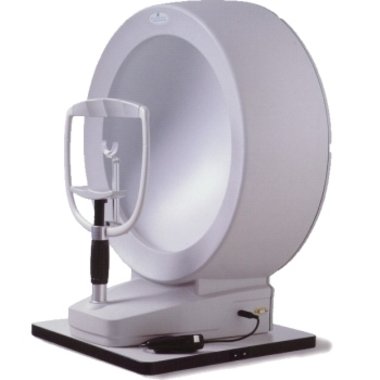
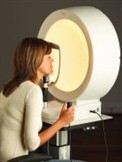
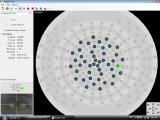
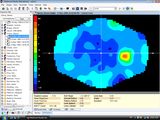
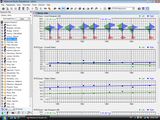
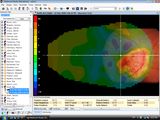
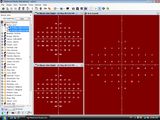
 Click here to fill in a rating for this item (after login)
Click here to fill in a rating for this item (after login)
